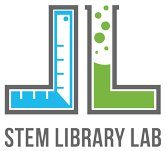by Callie Oliver | Jan 4, 2019
(MS.ESS3B.a) Mapping the history of natural hazards in a region, combined with an understanding of related geologic forces can help forecast the locations and likelihoods of future events.
by Callie Oliver | Jan 4, 2019
(MS.ESS3A.a) Humans depend on Earth’s land, ocean, atmosphere, and biosphere for many different resources. Minerals, fresh water, and biosphere resources are limited, and many are not renewable or replaceable over human lifetimes. These resources are distributed...
by Callie Oliver | Jan 4, 2019
(MS.ESS2B.a) Maps of ancient land and water patterns, based on investigations of rocks and fossils, make clear how Earth’s plates have moved great distances, collided, and spread apart.
by Callie Oliver | Jan 4, 2019
(MS.ESS1C.c) Tectonic processes continually generate new ocean sea floor at ridges and destroy old sea floor at trenches.
by Callie Oliver | Jan 4, 2019
(MS.ESS2C.e) Water’s movements—both on the land and underground—cause weathering and erosion, which change the land’s surface features and create underground formations.

